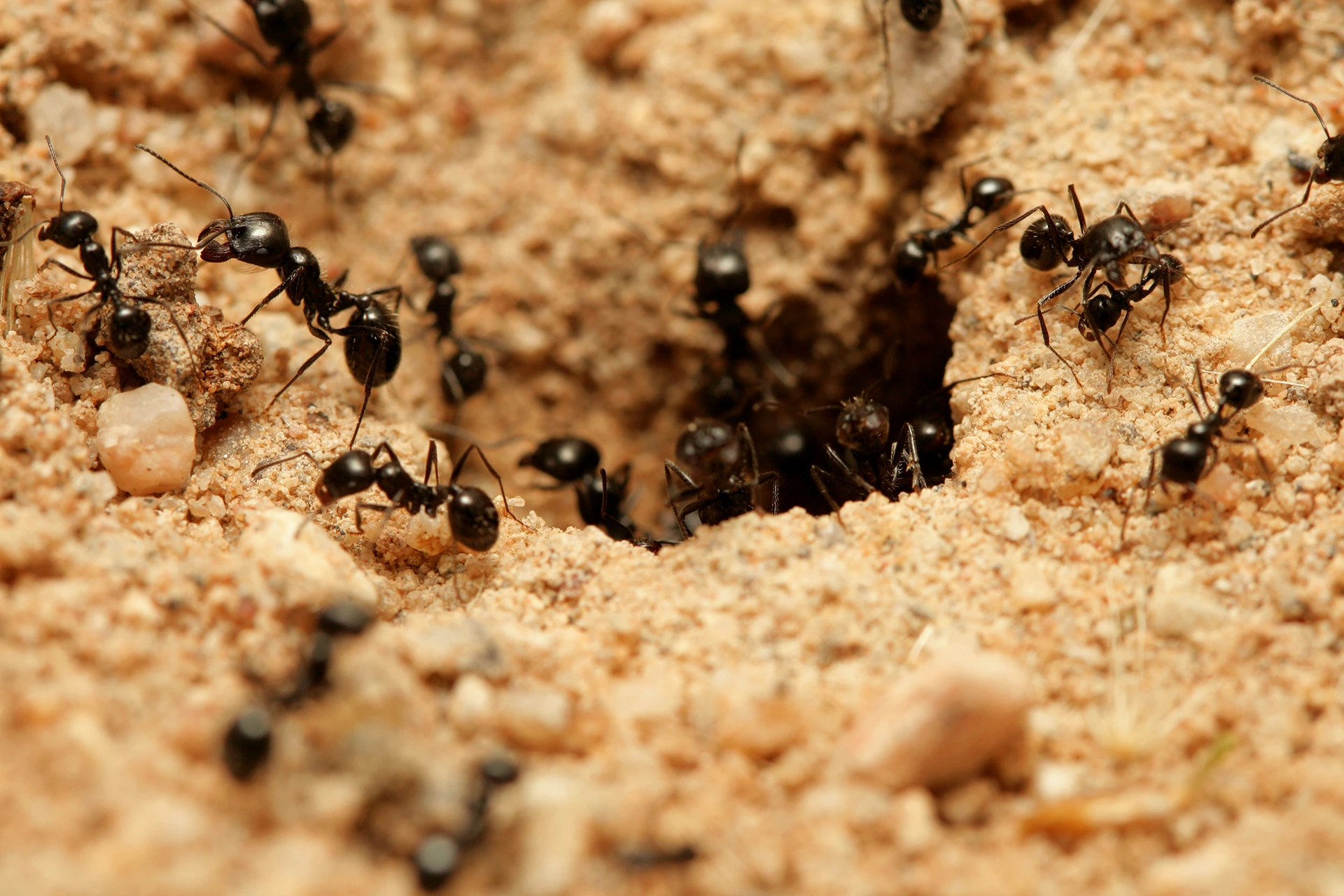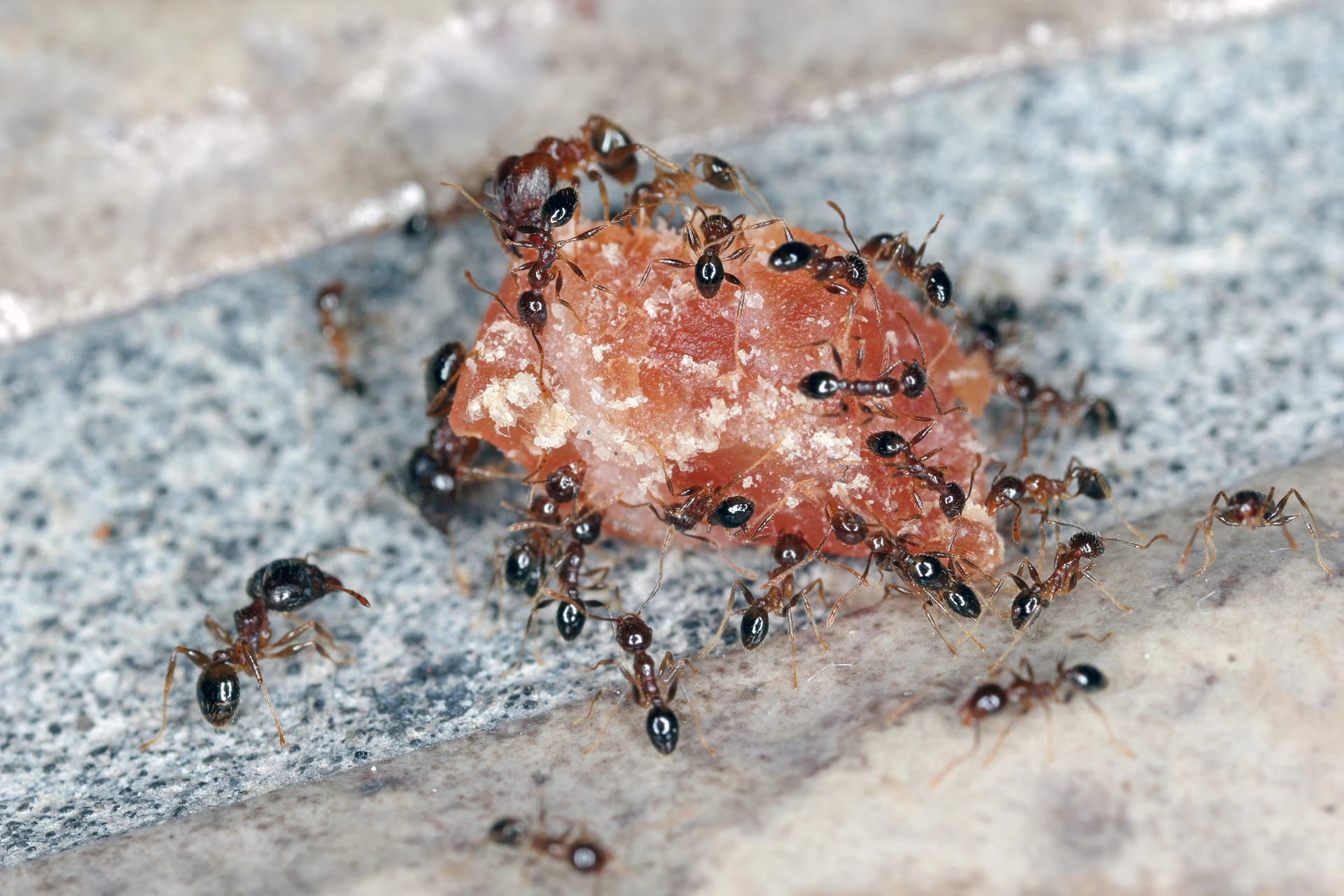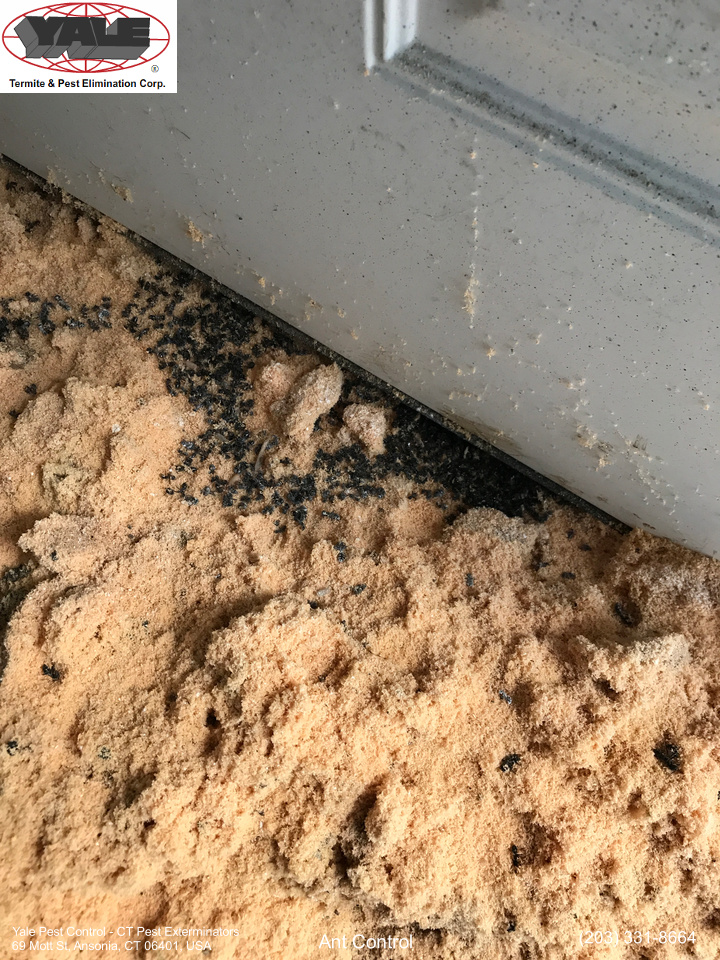
Originating from Europe, these pavement pests have established themselves in much of North America and are now one of the most common ant species here. A pavement ant infestation can be detected by the substrate or soil mounds they leave around their nests, but identifying the ant species isn't always enough to determine the best ant management strategy. Understanding the nesting behaviors of these ant species is also important for homeowners.
So are pavement ants classified as fully claustral species? Male pavement ants normally die after mating with virgin queens, and the pavement ant queens go off to create their own colonies. During the early phases of colony formation, the fully claustral queen isolates herself entirely in a chamber. She is responsible for raising the first generation of ants until they are able to assist promote a larger society and acquire food for the colony.
The first thing to understand is that an ant queen can be categorized into 3 groups: fully claustral, semi-claustral, and socially parasitic. Pavement ants are classified as fully claustral species. A fully claustral queen will be bulkier than a semi-claustral ant queen, but will have a smaller head proportionate to a social parasite or a semi-claustral queen.
As a result, they don't need to forage or fight during the initial stages of the colony since they spend all of their time in the nest. The fully claustral queens are prone to changes in humidity and disturbances and stress in their nesting site. They get their energy from fat and food storage, as well as metabolizing their wing muscles.
Pavement ant colonies typically have multiple queens and a large number of workers. A fully claustral queen lays eggs to start a new smaller colony of pavement ants. The ant queen's brood is then provided for by pavement worker ants until they reach adulthood. Broods are moved from place to place during their development to protect them from changes in temperature and humidity.
Pavement ant colonies can sometimes be found in the home, but this is an uncommon occurrence. In bathrooms, colonies commonly congregate under toilets and showers. They may also build their nests along underground or sub-slab heating ducts and gain entry to structures from heating vents. These warm areas help sustain colonies all winter long.
This fully claustral species can also be found in gardens, where their foraging can cause plant damage. They've been seen scavenging up to 30 feet away from their colonies, indicating that the source of an invasion can differ from one location to another.
Outdoors, pavement ant nests can be observed in the dirt beneath any type of debris, around curbing edges, and in pavement cracks, particularly cracks near lawns. These ants have been observed to build their nests in foundation cracks and expansion joint gaps.
This wide range of nesting activities can make it difficult to determine the exact location of a nest, but a small mound of excavated dirt is a telltale sign. Often these mounds of dirt are pushed up and away from where the ant nest is situated.
Pavement ants earned their name from the fact that they frequently make their nests under pavements, driveways, and building foundations. When displaced substrate or soil appears along a paved surface, pavement ants are most likely to be present.
Pavement ants may nest within structures near a heat source throughout the winter. This species of ants feeds on dead insects, nectar, greasy foods, seeds and sugar, including aphid honeydew. Pavement ants are known to establish scent trails to food and water sources from their colony's nest.
You must first determine whether you are dealing with pavement ants before using the suitable treatment procedure. When pavement ants are misidentified, the incorrect treatment methods could be used, resulting in a loss of money and time. The following are some common characteristics of pavement ants that can help you identify them quickly.
Pavement ant workers are 2.5 to 4 mm long and dark brown to black in color. These tiny workers have parallel grooves or lines on their head and thorax. There are two segments to the pedicel, which links the thorax and abdomen. Two spines in the posterior or dorsal thorax extend upward to the back and bear a stinger in the last abdominal segment. They also have 12 segmented antennae that are paler compared to their bodies.
Swarmers, also known as reproductive ants, are winged and about twice the size of workers, with a furrowed head and thorax. The spines are visible on females but not on males. After a mating flight, pavement ant queens typically shed their wings.
Pavement ants enjoy consuming greasy and sweet food, but they will eat anything that falls to the ground, including dead insects, seeds, honey, pet food, nectar, and just about anything else. Food preferences can differ depending on the season and the colony.
Pavement ants are natural scavengers who will devour meats, bread, grease, and other appetizing goods they can discover in human residences. Pavement ants will scavenge dead insects, plants, and anything else they can find outside.
Pavement ants are a nuisance pest that leave unsightly dirt mounds on roadways, sidewalks, as well as inside commercial buildings. Pavement ants have a stinger and can bite, however they rarely attack humans. Although these ants don't pose a threat to human health, they can lead to the contamination of food as they forage.
These small insects will search for any edible crumb and infiltrate structures in order to obtain sustenance for their large colonies. The pavement ant population will continue to expand as long as nests are not treated in time. A professional ant exterminator should be consulted if you suspect pavement ants are infesting your property.
Before becoming mature adults, pavement ants go through a complete metamorphosis, progressing through the egg, larval, and pupal stages. When winged male and female pavement ants swarm in June and July, they usually reproduce. The females look for a new nesting place after mating and become the queen ant of a new smaller colony.

Pavement ants are average household pests that flourish in heavily populated areas, often on or near pavement. These small insects will enter human residences in quest of sugar, starchy foods, potentially infecting them with bacteria collected from the outdoors. Pavement ant prevention can be challenging, but there are certain measures you can take around your home to help prevent them, including:
The best method to identify if pavement ants have infiltrated your home is to see worker ants crawling around, especially in the kitchen. Pavement ants can take over homes and outdoor patio areas as they scavenge for food by tracking a scent trail from their colony to a food source.
To keep most household pests away from food, make sure you store it in sealed, air-tight containers. Food sources must be restricted for ants, so as to prevent these small insects from gaining access. This will also keep other pests away who may be searching for a food source at the same time.
It's time to start stopping ants from infiltrating your home after you've finished eliminating food items and restricting access to them. Look for spots in and around your house that could be ant entry points. The evident entrances for ants can be eliminated by caulking openings around windows and doors, as well as the foundation of your property. These sealants will deteriorate with time and exposure to the environment, so pay attention to them and reapply as needed.
If you already have an ant problem, it's critical to figure out where they're emerging from and clear their trails to discourage them from entering your home. A simple vinegar and water solution applied down the area of the ant trail can disturb the ants and prompt them to search for a new food source.
Pavement ants make scent trails for other worker ants to follow. If one trail is found, there are likely to be more. When spraying ant trails, keep an eye out for variations from the trail that lead to other parts of your house and wipe them down as well.
The most common cause for contacting an experienced pest control company is ant infestations. Ants in your home are difficult to eradicate. No matter how many ants you kill, another colony of ants appears to take their place. There are many different types of ants, each with a different size, color, and food preferences.
The first step in removing ants from your property is to thoroughly inspect your home and yard. A complete inspection should indicate the species of ant you're dealing with, as well as the location of the nest. It's time to start treating pavement ants once you've confirmed their presence. Here are some ant control methods to help you eliminate a pavement ant infestation:
If you trace ant trails and locate an outdoor nest for the colony, a high dosage of liquid insecticide that can penetrate down to reach the queen may be effective. It may be beneficial to spray the nest with an effective insecticide. However, make sure that this is the ant colony that's causing your indoor infestation.
Ant barrier insecticides applied properly around the perimeter of foundation can deter scouts from approaching your home and discourage ants from invading in search of food. While local hardware stores may have goods that can be helpful, professional pest control companies have treatments that are more effective than those commercially accessible.
The introduction of baits can be used to control foraging pavement ant workers. The workers return to the nest with the baited substance, terminating the colony. In this sense, a homeowner has a wide variety of bait options. It should be noted that baits containing hydramethylnon, fipronil or boric acid have a gradual effect and don't kill worker ants before they have a chance to share the bait with the queen ant and juveniles, and larvae.
Place the ant baits in locations where ant activity has been detected, but keep them out of reach of children and pets. Replace used baits to keep a sufficient supply of bait for the colony. It could take two weeks or more to completely take effect.
The removal of ants and their nests from your property can be accomplished through a variety of means. While professional ant exterminators may be required in most situations, there are several natural and homemade alternatives that can eliminate the problem without introducing chemicals or toxins into your home.
Here are some of the most effective natural ant killers and repellents that you can make at home:

Ant infestations inside home walls can be tough to deal with, so it's best to entrust the job to a professional pest control company like Yale Pest Control. Before selecting the optimal treatment strategy for your property, our team of pest professionals thoroughly evaluates the level of damage and infestation. Whether you’re experiencing an invasion of common ant colonies, such as pavement ants or fire ants, we’ve got you covered.
At Yale Pest Control, our pest control and management is the smartest, safest choice for businesses and homes looking to get rid of pests. We have the necessary equipment, strategies, and techniques to keep any type of pest and insect out of your property. Other services offered by Yale Pest Control include fumigation and nest/colony removal. For a free quote on our services, feel free to contact Yale Pest Control now.